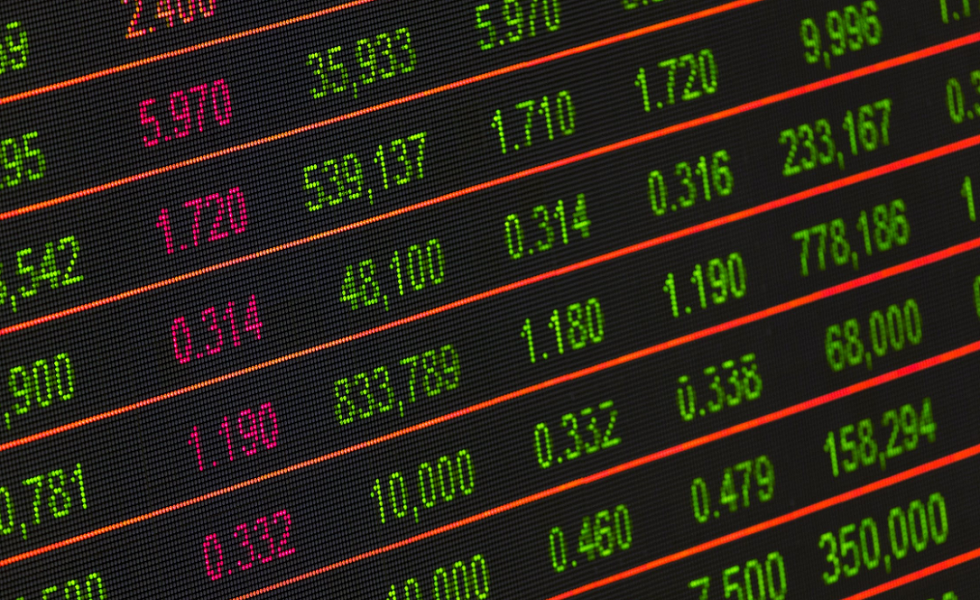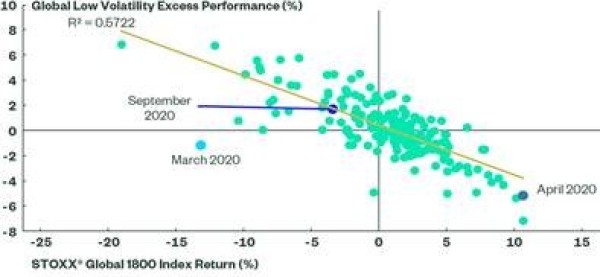SSGA-SPDR: Positioning for Uncertainty in Global Equities
SSGA-SPDR: Positioning for Uncertainty in Global Equities

Positioning for Uncertainty in Global Equities
- Low Volatility strategies delivered excess performance in September, as global equities experienced a pullback after recovering their pre-crisis all-time highs.
- Investors concerned with the potential for US election outcomes and COVID-19 to drive uncertainty could consider a Low Volatility approach.
Global equities experienced a significant drawdown earlier in 2020 amid the onset of COVID-19 and the associated economic shutdown. However, at the end of August, global equities (MSCI World) had returned to their pre-crisis all-time highs and were up 5.34% year to date.
At that time (25 August 2020), we posed the question in our Strategy Espresso, Have we come too far, too fast? with the recovery, suggesting that investors seeking to remain long at those valuations could “consider a Global Low Volatility allocation to position against the negative effects of lingering uncertainty.“ This ended up being a timely note as the MSCI World Index pulled back 3.45% in September, while the STOXX® Global Low Risk Weighted Diversified 200 Index (referred to hereafter as “Global Low Volatility”) outperformed this moved by 1.74%.
However, many investors may have missed this opportunity given that, during the COVID-19 selloff in Q1, low volatility strategies failed to deliver their historically observed drawdown protection (see Figure 4 - Low Volatility Performance in Major Market Selloffs in Low Volatility Index Comparison: Flexible and Fast Road to Portfolio Protection). This can largely be attributed to idiosyncratic characteristics of the pandemic’s impact on equity markets. A careful examination of the historical returns of a Global Low Volatility approach explains both that the March 2020 performance was an outlier and that more recent performance (September 2020) is more in line with the historical trend.
Figure 1 shows the relationship of relative (excess) returns of a Global Low Volatility approach versus the market cap benchmark STOXX® Global 1800 Index (“market benchmark”) on a monthly basis over the last 15 years. In both instances, there is a strong negative correlation between the excess returns of Global Low Volatility and the market benchmark. This would suggest that, when the market was down, Global Low Volatility historically delivered outperformance (and vice versa). Looking at the correlation coefficients for each suggests a strong relationship (Monthly 0.57, Annual 0.72).
As we discussed in August, we believe the recovery should encourage equity investors. However, there are still notable events ahead (e.g. US election outcomes and ongoing COVID-19 uncertainty), which may continue to worry investors about equity price sensitivity at the current levels. Cautious investors may begin to favour a Low Volatility approach, especially as strategies such as Global Low Volatility have returned to their historical trend in terms of relative performance. Investors seeking a diversified approach to remaining long at these valuations can consider a Global Low Volatility allocation to position against the negative impacts of lingering uncertainty.
Figure 1: Monthly Low Risk 200 Active Return vs. Market Return (Last 15 Years)

Source: State Street Global Advisors, Bloomberg Finance L.P., as of 30 September 2020. Past performance is not a reliable indicator of future returns. Index returns reflect all items of income, gain and loss and the reinvestment of dividends and other income as applicable.




